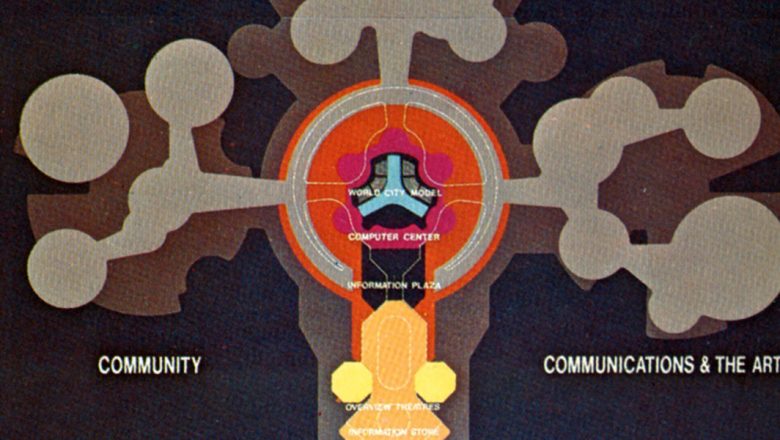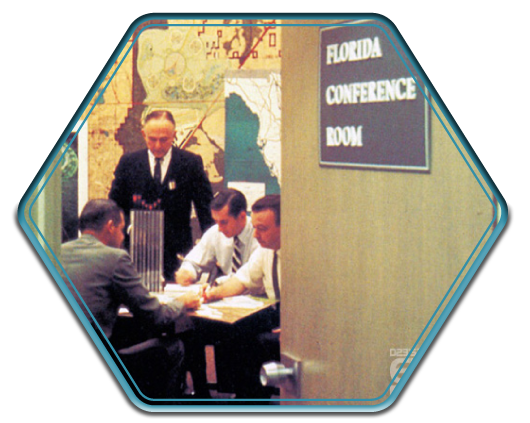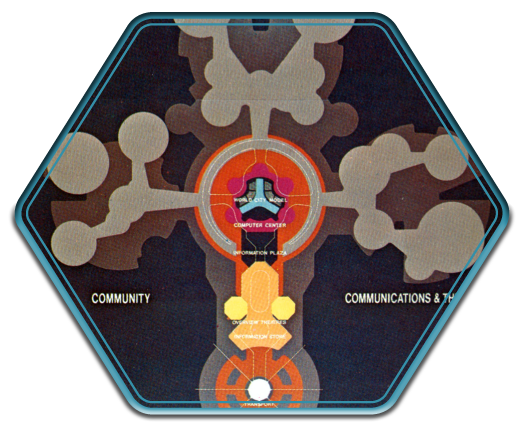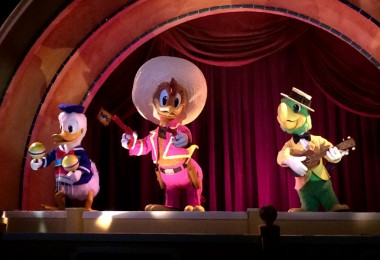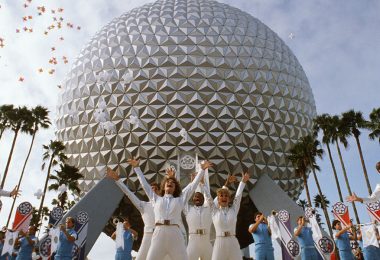By author and historian Michael Crawford
On July 14, 1975, in front of media and visiting dignitaries, President of Walt Disney Productions Card Walker and Disney Board Chairman Donn Tatum announced Walt Disney Productions’ new vision for EPCOT. This new concept had three key elements. The first, the EPCOT Satellites, would debut as previously planned with the World Showcase. The second idea was a Theme Center where guests could learn about EPCOT activities. The third was the EPCOT Institute, which would facilitate participation in EPCOT’s scientific endeavors.
This independent nonprofit organization would provide the administration required to recruit and enable participation in EPCOT. The EPCOT Institute was designed to maximize the benefits from EPCOT-related research and share it with the sponsors of EPCOT and the public. Expert advisory boards would help establish the technical credibility of projects undertaken.
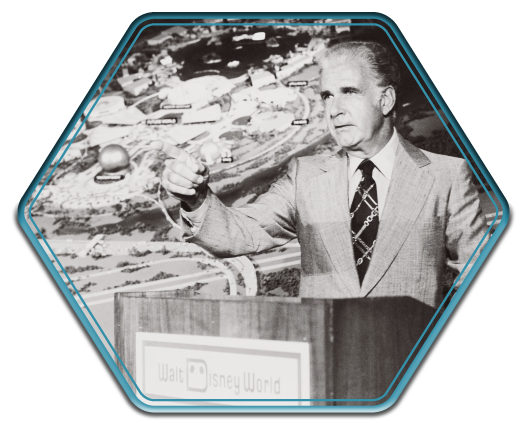
Two prominent new executives came aboard to provide a public face for EPCOT. Gordon Cooper, scientist and member of the fabled Mercury 7 astronauts, was named vice president of Research and Development for EPCOT. C. Langhorne Washburn, the assistant secretary of Commerce for Tourism, resigned his position in the Nixon administration to join Disney as the World Showcase vice president. Washburn coordinated the diplomatic efforts required to recruit international participation in the EPCOT project.
Advisory boards were to be formed for the Satellite projects in fields such as oceanography, agriculture, education, medicine, and communications; EPCOT would recruit world leaders in each field to participate in the development, testing, and evaluation of these pilot projects.
Rounding out the three concepts announced in July 1975 was the Future World Theme Center, an entirely new attraction acting as the hub of all EPCOT-related activity in Walt Disney World. This concept would eventually evolve into Epcot Center’s Future World area. For the first time, the notion of individual pavilions themed to various fields of study appeared.
Planned for the area where Epcot Center would eventually be built, and connected by mass transit to the existing Walt Disney World Resort, the Theme Center would provide guests a glimpse at the activities underway in the EPCOT Satellites. It would provide a forum for showcasing new concepts and systems as well as opportunities and challenges. The new facility would use advanced communications techniques, including motion picture technology, models, multi-media exhibits, and ride-through experiences, to inform millions of people each year about what is being done in the creative centers of science and industry around the world.
While the EPCOT Institute would provide administration, coordination, and funding, and the Satellites would conduct research and development and test and demonstrate prototypes, the Theme Center would then showcase and communicate these efforts to the world.
The Theme Center’s high-capacity guest facilities would expose a large daily audience to the cutting-edge work underway in EPCOT’s Satellites. Some of the Satellite facilities might have small guest capacities or be off-limits entirely. By summarizing their activities at the Theme Center, Disney researchers would be able to show what was happening daily in a number of facilities all at once. Guests would not be charged to visit the Theme Center, but Satellite facilities (including World Showcase) would require an admission fee.
A two-story Transportation Hub served as the entrance to the Theme Center and led to the CommuniCore, a Communications Corridor. In this “Main Street” of the future, according to company records, “the visitor will be exposed to a series of entertaining and instructive information experiences and communication techniques.” Designed to “introduce and demonstrate new systems of information gathering, processing, and disseminating,” CommuniCore would also provide a focal point for visitor orientation to EPCOT and the EPCOT Information Network that would reach out to homes and offices around the world.
These areas of Energy, Transportation, Food Production, Finance, Education, Information, Health Care, and Oceanography eventually formed the basis of Epcot Center’s opening roster of pavilions. Plans from April 1976 estimated a 1980 opening date for World Showcase and the EPCOT Theme Center. By 1985, World Showcase would be expanded to its full complement of 30 nations, and three-to-seven Satellite centers would open across Walt Disney World; another three-to-five Satellites would be added by 1990. But it remained to be seen whether Disney could recruit enough participants to make EPCOT a reality.


